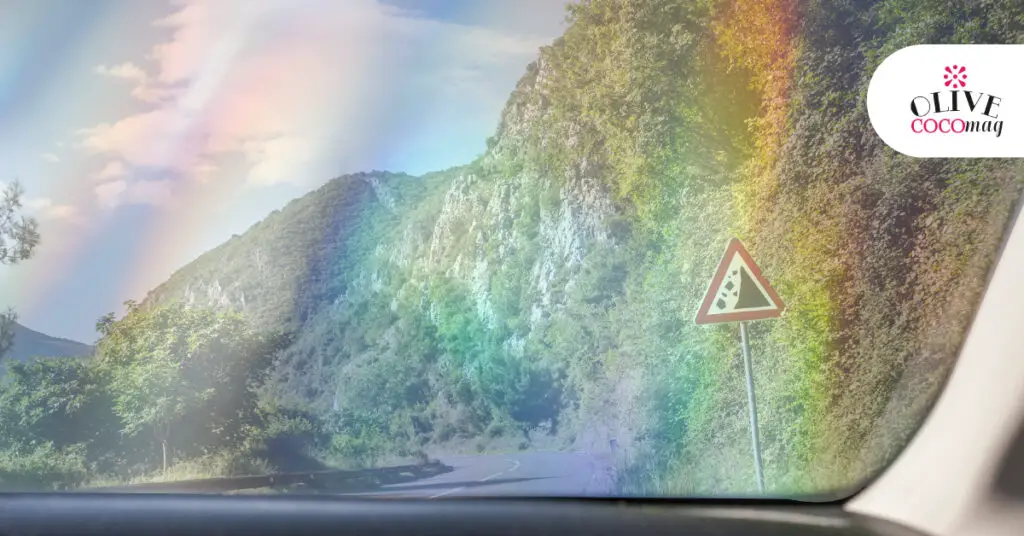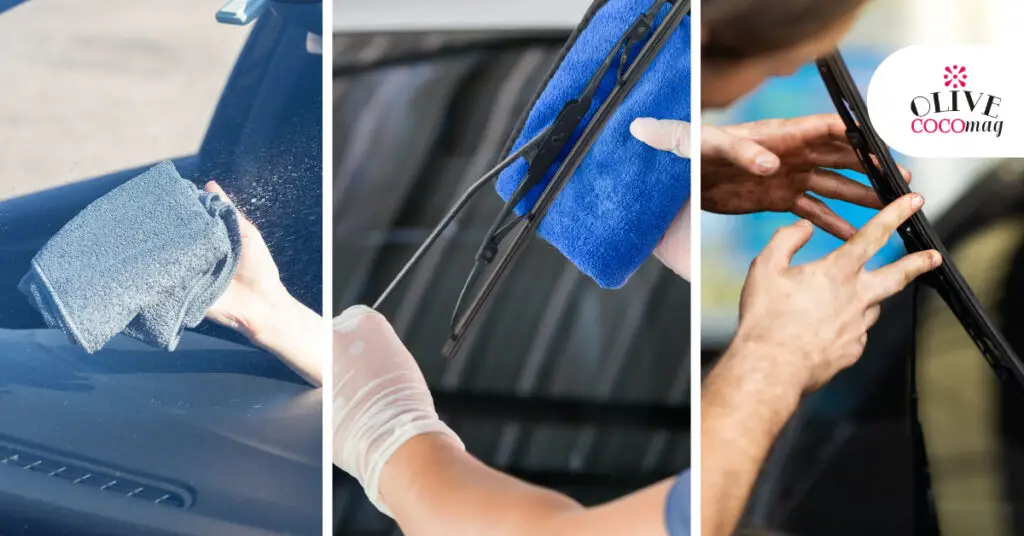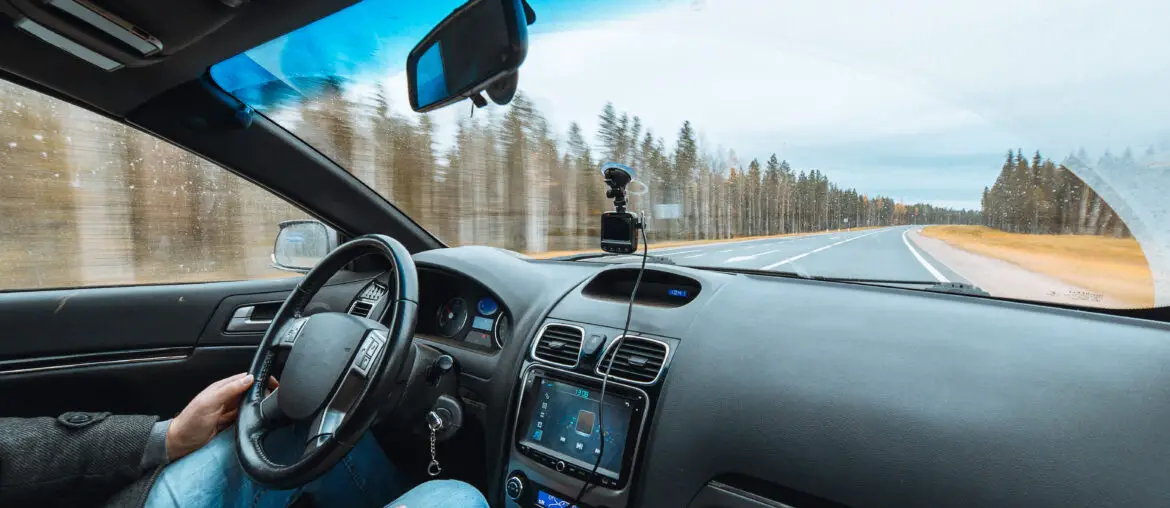You might have seen wavering rainbow colors on your car windows sometimes when you put on sunglasses. This would even not happen for some other pair of glasses. You might think that there’s something wrong with your window tint or that something has gone wrong in the installation. You might even conclude that the lenses are defective. But the real scenario is different. These rainbows in car windows that you see can easily be explained with some physics. So let’s learn more about this.

Table of Contents
What Makes Rainbows in Car Windows?

Most of the car windows of the back and sides are tempered. They are designed to shatter during an impact without creating sharp edges. So, during the process of tempering, the glass is heated to very high temperatures and then rapidly cooled down to room temperature. During this cooling, the surface cools faster than the core of the glass. Therefore, the outside contracts and causes compressive stresses while the center expands due to its temperature and created tensile stresses. This altogether causes an effect known as the stressed birefringence. As a result of this, the material changes the polarization of the light.
So, what you see in the car windows is the strain pattern that has been created as a result of the tempering process of the glass itself. If you are wearing non-polarized lenses in the sunglass, then you wouldn’t see this, as the light from all angles is absorbed by your eyes. But, if you are wearing sunglasses with polarized lenses, then it filters out all light waves except the vertical ones. This creates the patterns of light that you see as rainbows in car windows and rear glass.
Why Does a Rainbow Effect Appear When Looking Through Two Tinted Glasses?

Let’s consider the situation where you are viewing your tempered car window through a pair of polarized sunglasses. The light outside enters the window glass first. The polarization of the incident light is caused due to the stresses of tempering of the window glass. The amount of this rotation depends on the wavelength. Hence, various colors are created as a result. This occurrence is quite similar to what happens in a prism or raindrops to create the rainbows. The light is bent and refracted, giving out various colors respectively in order of their wavelengths. You can only see this through polarized glasses.
The same effect occurs in some objects such as plastic utensils, which have undergone stressed birefringence during the process of manufacture. You can see this through a polarized glass and this is known as photoelasticity. In the field of research and development, this characteristic is used to determine a material’s stress distribution by scientists and structural engineers. However, this rainbow effect is much strongly visible in the windows and window films as they are made of polyester which is also a form of plastic.
If you do not see any rainbows or patterns on your glass, then the reason is that the glass must be made of laminated safety glass and not tempered glass. If you get distracted by this and if it blocks vision, you would have to use a pair of non-polarized glasses while you drive.
What are Rainbow Stains?
Even though rainbows do not occur on windshields made of laminated glass, there is a possibility of having this rainbow effect due to various other conditions on the windshield. Even though the popular belief is that the glasses are completely smooth and flat, this might not be the case always. When observed closely under a microscope, there would be tiny peaks and valleys on the glass.
This is a common occurrence that happens as a result of the production process. However, stains and corrosion are more likely to originate from these points. Due to exposure to various chemicals and even acid rains, the staining, and corrosion of glass occur. This might even occur as a drop of water stays in contact with the glass surface for a long time, where its basicity or alkaline nature affects the glass. The glass gets corroded and this might not be visible to the normal eye in the initial stage.
These stains would develop themselves as iridescence stains which are normally known as rainbow stains or as dense translucent stains. Sometimes, these stains would be visible as soap scum and the toughened glass surface would attract more water to increase the rate of corrosion.
How Do I Get Rainbow Off My Windshield
Usually, when these stains occur on normal glass applications, the preferred method would be to remove the stain by re-polishing the glass using some mild abrasive such as cerium oxide or a similar product.
However, this would be much difficult and a time consuming task. Therefore, most often, the glass would be replaced with a new one. But when it comes to the car windshields, both the removal of stain and securing proper visibility are equally important. Therefore, it is recommended to take your vehicle to a window tint store and get the advice of a professional. However, we can give you some valuable tips on how to prevent this stains occurrence and minimize the possibility in the future.
How to Minimize the Risk of Staining?

Clean your glasses and windshield regularly to minimize the staining and streaks on them. You can follow the steps indicated below.
- Choose a proper glass cleaner. An automotive glass cleaner is preferred. Even these may be a bit expensive, they would often give you the best results. Some people would use a water and vinegar mixture in a 1:1 ratio. Some would simply use pure ammonia for the cleaning. But this would not be a good method for cleaning. Even though ammonia is a good glass cleaner, it would damage the upholstery and paint of your car.
- Wash your windshield by applying a thin, misty layer of cleaner to the windshield. Start by cleaning one half at a time.
- Wipe off gently using a squeegee in case you do not have any microfiber towels. Use a paper towel to dry the squeegee between the strokes.
- Dry the windshield using a fresh and clean microfiber cloth. Make sure not to use any dirty cloth as it would scratch your glass. Do not let the windshield dry on its own as this would lead back to creating steaks and causing stains.
- Also, clean the inside of the windshield to avoid any mist and saturation inside. Use a light circular motion when cleaning the windshield. Do not use a squeegee for the inside cleaning.
- It is recommended to use wiper fluid when driving as the windshield wipers cannot alone wipe away the mud and debris.
- Clean and wash your wiper blades to avoid streaks on your windshield. When doing this, make sure not to get soapy water again on your cleaned windshield.
- Dry the edges and the rubber ridge of the wipers using a clean microfiber cloth in pulling motion.
- You would also need to focus on replacing your windshield wipers early if you live in a warm and dry climate. This is because the delicate rubber can be damaged by the sun and would end up streaking your windshield.

How to Prevent Streak on Windshield

- You can keep water and debris off your windshield by using water repellant. You can try out a water-repellant treatment by spraying a mist of the fluid onto the dry windshield and wipe it off using a clean microfiber cloth in small circular motions. Afterward, let it dry for about ten minutes. Do this water repellant treatment about once a week.
- Another way would be to use a better wiper fluid. Get recommendations from a professional in your area to find the ideal brand.
- If there are any cracks or tearing in your windshield wipers, do not hesitate to replace them with a new one. After all, it is that one simple decision that might secure your vision and save lives in need.
- It is very important to maintain your windshield as it is the most important area among all the glasses and windows of your car. You need proper vision without any obstruction when driving. So, it is advised to inspect your windshield regularly and if you see any issues, contact your technician for further information and give you better advice than the manuals and guidelines cannot provide.
- Florida Tint Laws For Vehicles 2021Florida tint laws were enacted in 1991. The main intention of these laws is to safeguard public safety by ensuring proper visibility of the drivers. Since some towns and counties have
- Connecticut Tint Laws For Vehicles 2021The Connecticut tint laws for vehicles were enacted in 1994. This state has been the 24th state to enact these laws out of all 50 states in the United States. This
- ReTinting Car Windows: Why, How, And When?Retinting car windows are necessary because the films cannot be repaired once they are damaged. As the films are too thin and delicate, the only option is to retint car windows.
- Florida Window Tint Laws: Things You Need To Know Before TintingFlorida window tint laws were enacted in 1991. The main intention of these laws is to safeguard public safety by ensuring proper visibility of the drivers. Since some towns and counties
- Tennessee Window Tint Laws – 2021The Tennessee window tint laws were enacted in the year 1990. This state was the 11th to enact these laws out of all the 50 states. There are many important rules







